C.M. Simpson's Blog, page 148
December 21, 2016
Writer Life: Starting Over with GIMP (Part 1 - Creating a New Canvas)
So, today, I downloaded the newest version of GIMP—figured I couldn’t do a useful how-to for folk new to the program without having the version they were most likely to have downloaded. So, with great trepidation, I uninstalled the version of GIMP I was using – 2.8.0 – and downloaded 2.8.18.I’d read the changes the developers had noted, and they looked pretty daunting. GIMP has never been an easy ride for me. And then I took the ‘Download GIMP 2.8.18 directly’ option, and crossed my fingers.
One of the things I noticed after the uninstall, was that all my GIMP picture files remained, but were blank. This is pretty scary for someone who is as much a know-nothing when it comes to this sort of thing, so I kept those fingers crossed and let the download complete, before hitting the setup.exe file, and following the directions all over again.
That part was easy.
Of course, the first thing I did was to click on a recently created file to see if it would work with the new version. I figured if it didn’t, I could always do another uninstall and then reinstall the old version. Fortunately, I don’t have to do that; the files from 2.8.0 open just fine in 2.8.18. Phew!Next thing was to get moving on testing out the new interface, and that’s what today’s blog post is all about, so, here we go.
First thing, this new version of GIMP looks very similar to the older version I’m used to. This is a big relief. I note it does have the option for putting the picture and the docks in a single window, though. I prefer having the image window separate because I usually use two screens. Today, though, I’ll put everything on one screen so you can see how this looks.
NOTE: I used the single window option under the ‘Windows’ tab to see what it looked like.
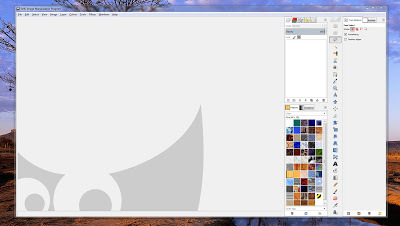
I don’t like it, but you might. I unticked the option, and discovered that the separate ‘docks’ or menus remained together. I kinda like that, so I think I’ll keep it. That, and I haven’t worked out how to separate it yet. Give me time; I already have an idea of how to do this, but I just want to get moving on the whole ‘how-to’ thing.
This is how it looks when you untick the ‘Single Window’ box.
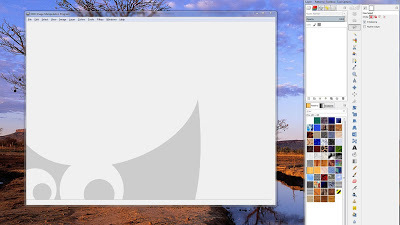
Creating a Cover in GIMP
To start with, I’ll just go through my normal cover creation steps, and see how they look in this new version.
Ready? That’s great, because I’m not sure I am. So, here we go.
Step 1: Create a new canvas.
You do this by clicking on the ‘File’ tab at the top of the picture screen.
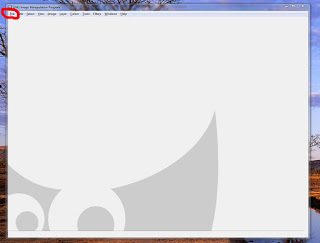
This creates a drop-down menu, which I can’t work out how to snip, but I’m sure you can find the first option down ‘New’. Click ‘New’.
This gives opens a pop-up window titled ‘Create a New Image’.
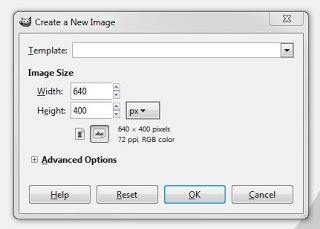 You will see that it has a space for a template. This is very cool, but doesn’t have the settings I usually use for a cover. I will see if I can create a template for that, though. When I do, I’ll let you know. For the moment, ignore the Template dropdown.
You will see that it has a space for a template. This is very cool, but doesn’t have the settings I usually use for a cover. I will see if I can create a template for that, though. When I do, I’ll let you know. For the moment, ignore the Template dropdown.Under Template, you have ‘Image Size’, followed by ‘Width’ and ‘Height’. It is set to a default measurements of ‘px’ (or pixels).
Width is where we are going to make the first change. If you double click on the numbers in the box beside Width, you can highlight the whole number and type in the number you want. For a cover, I use a width of 1875 px.
Height is where I make the second change. Change the current measurement to 2850.
The pop-up now looks like this:

Under the Height and Width options, you will see a header titled ‘Advanced Options’ with a little square next to it. Click on Advanced Options. Your pop-up window will expand to show the resolution of the final picture. Resolution helps measure how clear your picture will come out when it is printed or displayed.
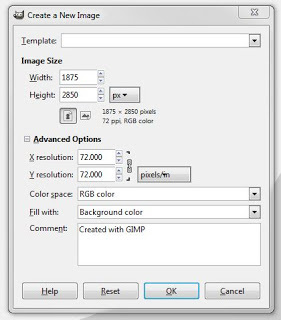
A cover requires a minimum resolution of 300 dpi. The default setting for the X and Y resolution of your image is 72. This is not acceptable as a cover resolution for most of the platforms selling e-books. You will need to change it.
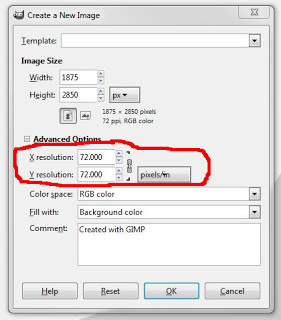
The minimum resolution is 300 dpi for most sites. I use 600 dpi. dpi stands for ‘dots per inch’. A pixel is a dot. The default setting in GIMP is pixels/in. I leave this as it is.
To change the X and Y resolution, you triple click in the box next to each setting. This will highlight the number inside. Do this for the X resolution box, and then type 600. This will change the number in the Y resolution box, as well. You will notice a little chainlink to the rightof the box. If you click on this, you will break it, and then the number in one box will NOT change when you change the number in the other box. In general, though, it is best to leave this link alone.
Below the resolution, you will see Color space. It is automatically set to RGB color. Leave this as is, since it is the color scheme compatible with the most web sites.
For the moment, I leave the ‘Fill with’ option set to its default, but I’ve noticed an option I’d like to experiment with, so I will fiddle with that later, and then blog the results.
The Comment box has ‘Created with GIMP’ for its text. I usually leave this, but then add ‘by C.M. Simpson as the cover for’ and then I put in the title of the story I’m creating the picture for.
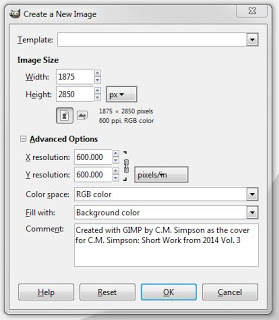
When you’re happy with the details for the new image, click ‘Okay’.
You will end up with a screen like this:
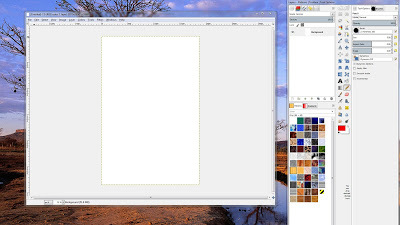
I was originally going to post this as one very long post, but Blogger got a little grumpy, so it is not in four parts. I'll post two today, and two tomorrow.
Published on December 21, 2016 23:10
December 18, 2016
Progress Report: Week Ending December 17, 2016
It’s been a pretty good week. I’m starting to make the transition into full-time writing, and, it feels strange. It’s also hard to balance the publishing tasks with the writing tasks, but I believe it’s doable.Overview
New words produced: 13,855Old words revised: 56,622Outlines and Notes: 3,258Works completed: 0Works revised: 3Covers created: 1Works published: 1Works submitted: 1 (Pitch)Competitions Entered: 0Bloggery: 0University Prep and Assignments: 0
Stepping Up Challenge Update
Not much movement on this, this week. The focus is on publishing.
Ingress Updates
No new challenges for me.
PokemonGo Updates
Nothing new to report
Publishing Tasks
Released the mass market and large print print-on-demand versions of Seppelitus.Edited 366 Days of PoetryBegan the print-on-demand format for the mass market version.
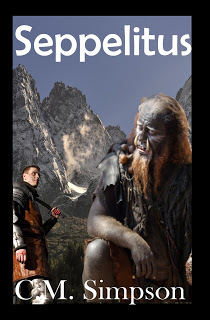
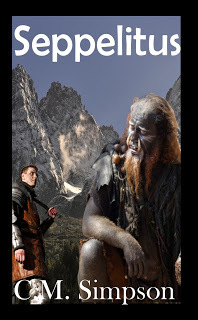
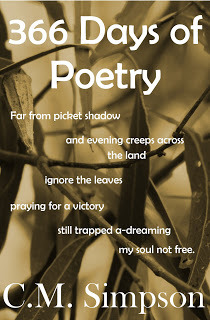
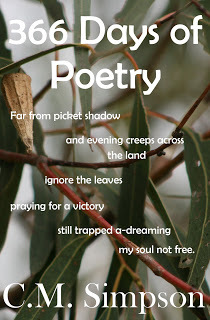
New Arrivals
None this week – but it’s been pretty full on. Maybe next week. At least this way I have a chance to catch up on the ideas already generated… maybe…
Published on December 18, 2016 16:40
December 16, 2016
Ingress: How to Move A Mission Medal
A while back, I was doing a few single missions, when I noticed that my medals didn’t line up. Basically, where one mission mosaic had two badges on the line below it, the mission mosaic below it, had only one. This meant that when I completed a line of six, the bottom mosaics on my scanner wouldn’t line up to display their images correctly.
I knew the only way to move a medal was to re-do the mission, but, damn. How many of these suckers was I going to have to repeat? Well, it turned out to be five. Five!
So, I thought it might be interesting to screen-shot the process as I went along. This is what it looks like to move your mission medals around in order to realign.
I needed my scanner to go from looking
like this:.................................................................................................to looking like this:
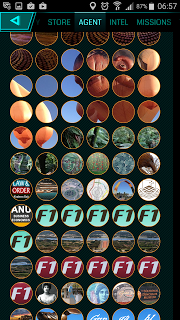
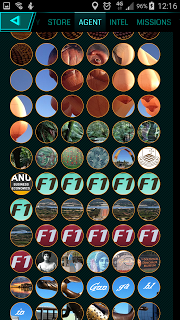
See the difference?
In the first screen shot, there are two pieces of the sky-whale mosaic at the start of the line below the rest, but only one piece of the green F1 mosaic on the line below the rest. In the second screen shot (taken after I corrected the error), there is only one piece of the sky-whale mosaic at the line under the rest, but there is also only one piece of the green F1 mosaic.
I had to choose five missions to re-do, in order to make the correction, so I moved these:
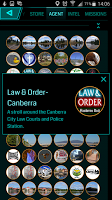
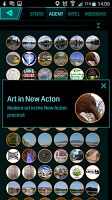
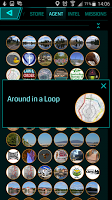
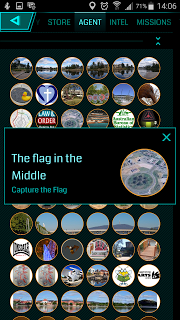
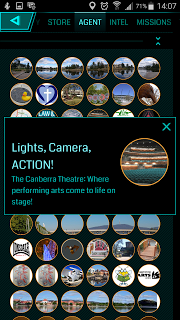
And this is what it looked after I moved the first two:
At the bottom:
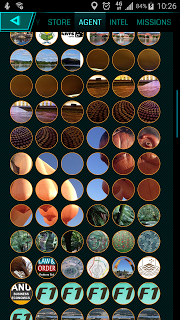
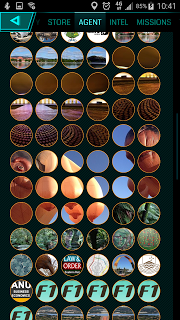
And at the top:
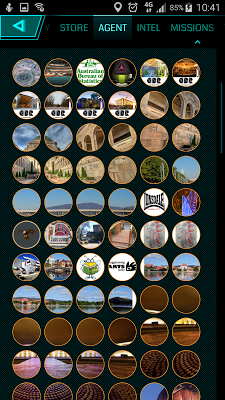
And after moving 3, it looked like this at the bottom and at the top.
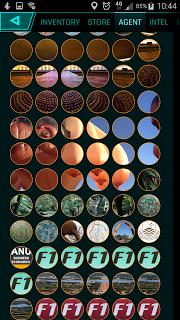
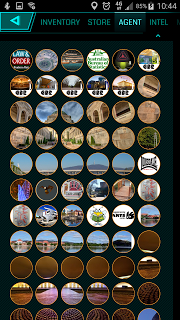
While after four, it looked like this:
at the bottom and at the top
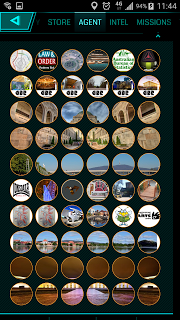
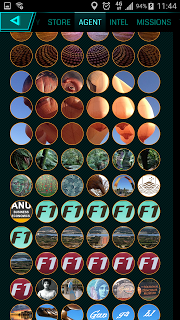
and after five - FINALLY! - it looked like this:
at the bottom and at the top
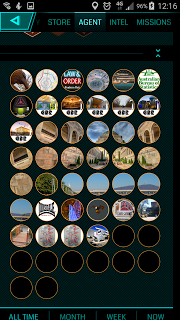
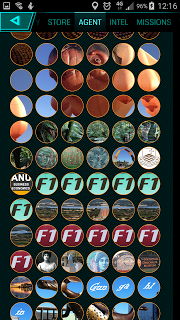
Which, I have to admit, was a lot of work, just so I could do one more mission (note the ducky)
and have the top row look like this.... .................and...............the bottom row look like this...
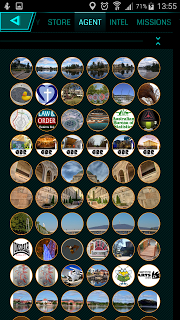
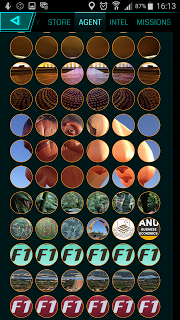
So, if you find you've messed up and your mission medals aren't sitting pretty, I hope this helps. Just remember that the layer below the mission you do again won't change, because you are adding it to the layer at the top so the gap is filled by it pushing the medals that were before it, into its place... or something like that.
And, now, it's time to move.
Published on December 16, 2016 09:30
December 15, 2016
Writing Life: Resources for the Beginner Indie
When I decided I wanted to write again, I took six months of research before deciding not to pursue a traditional publisher, or an agent. It wasn’t six months of wondering, though. It was six months of research. I read every blog I could find from as many different people in the publishing and writing industry as I could. I read traditionally published authors, hybrid authors, purely independent authors. I read agents’s blogs, publishers’ blogs, and industry commentators’ blogs. I went through articles on writing, on being published, on scams, on methods, on conventions.
And when I sat down and tallied up the pros and cons, I decided to go independent.
There’s a lot of information out there, so I’m going to narrow it down to four:
www.kriswrites.com:Kristine Kathryn Rusch blog - 40 year veteran with some good advice and insight into the publishing industry;www.deanwesleysmith.com: Dean Wesley Smith - as for KKRusch; http://www.thepassivevoice.com/:an IP attorney whose blog collects information about the publishing industry from a variety of sources - good springboard for further research and resources; andhttp://accrispin.blogspot.com.au/2016/12/small-press-storm-warnings-torquere.html: a place to find alerts and warnings about unscrupulous operators in the publishing world.
In addition to references, you will need to be aware of the different platforms you can publish from. Here are four to get you started: https://www.amazon.com/gp/seller-account/mm-summary-page.html/ref=footer_publishing?ie=UTF8&ld=AZFooterSelfPublish&topic=200260520https://www.smashwords.com/https://www.allromanceebooks.com/(or omnilit.comif your books are not romance - same platform, but different specialities)https://www.kobo.com/writinglife
And for covers you can use any program, but this one is free:https://www.gimp.org/
Hope that helps – and GOOD LUCK
Published on December 15, 2016 09:30
December 10, 2016
Progress Report: Week Ending December 10, 2016
It was a busy week, this week, as I started to establish a new writing routine. The results are already starting to show, and I’m pleased with the way things are progressing. I need to tweak the editing program, a little bit, but this is, so far, an acceptable rate of progress. I am currently in catch up mode trying to get things to a state where I’m formatting and uploading twelve months ahead, so the workload is heavier than it would normally be—but that’s the price of just starting to work out how things should look. So far, I have writing completed for releases through to the first week of October next year, and have five more items to complete before I’m running to schedule on the writing front. On the publishing front, I have to knuckle down and get the editing, formatting and uploading done for things that are due this month, and then get to work on the rest. Like I said, this is the starting out phase, where you know where you need to be, and have to put extra work in to get there. I’d like to have this done by the end of the month, but, if I’m realistic, it probably won’t be up to speed before the end of January, which is good, because university starts back then, and the routing will need to change to allow for that. I’ll just have to see how it goes.
OverviewNew words produced: 25,660Old words revised: 12,233Outlines and Notes: 1,972Works completed: 3 (1 x novel; 2 x short stories)Works revised: 4 (2 x short stories, 1 x chapter book, 1 x young adult novel)Covers created: 0Works published: 1 (large print and mass market print-on-demand versions for 1 x novella)Works submitted: 0Competitions Entered: 0Bloggery: 1,178University Prep and Assignments: 0
Stepping Up Challenge Update
This has taken a back-seat the writing and publishing side of things, but will be kicked back up, once they are settled.
Ingress UpdatesNo new challenges for me, although the birthday celebrations went well, and we were all awarded a new medal… which I will put up in another post.
PokemonGo UpdatesNothing new to report.
Publishing TasksCreated 2 blog posts for this blog;Updated my submissions records page to ensure I blocked out markets that didn’t want re-prints, and added the listings for all my new titles. I’ll begin making re-print submissions soon.Finalised the editing and formatting for the large print and mass market versions of the Australian steampunk novella, Rendezvous at the Raptor’s Rest .Almost finalised the editing and formatting for the large print and mass market versions of dark fantasy novella, Seppelitus .
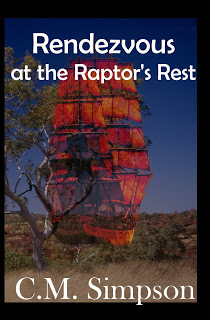
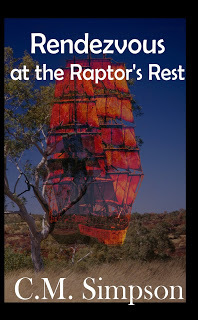
When his flying ship, the Red Horizon, was shot down, Tescher told no-one he had a woman on board. Three years later, he returns to the ship wreck and finds Marianna not only survived the crash, but left him a message. She found what she was looking for aboard his ship, and she’ll wait for him at the Raptor’s Rest, but once a year—tonight. Tight flying will get him there in time, but it will take more for him to navigate clear of the criminal shores on which Marianna has landed.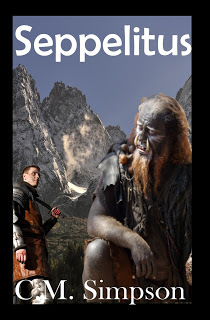
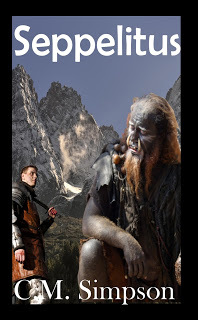
Being a bodyguard isn’t easy, not even when you’re the seventh son in a long line of seventh sons, not even when the magic comes when you call—and especially not when the man you are protecting is a treacherous, lecherous spoilt son of wealth and privilege, who betrays you for a pretty girl. Transported to the far north, Seppelitus must extricate himself from a deal between gargoyles, ogres and a demon lord, and then work out what he’s going to do about the dragon. New Arrivals
The following pieces arrived last week and are awaiting completion:NonFiction12A—Indonesian Text 1: an Indonesian text; could become more than one book, depending on lesson plans, activity sheets and so forth.UF4C—Aggie and Tams 3: in the outback, Aggie and Tams visit Winton. CrimeNovel8—Untitled: a crime in Winton.
OverviewNew words produced: 25,660Old words revised: 12,233Outlines and Notes: 1,972Works completed: 3 (1 x novel; 2 x short stories)Works revised: 4 (2 x short stories, 1 x chapter book, 1 x young adult novel)Covers created: 0Works published: 1 (large print and mass market print-on-demand versions for 1 x novella)Works submitted: 0Competitions Entered: 0Bloggery: 1,178University Prep and Assignments: 0
Stepping Up Challenge Update
This has taken a back-seat the writing and publishing side of things, but will be kicked back up, once they are settled.
Ingress UpdatesNo new challenges for me, although the birthday celebrations went well, and we were all awarded a new medal… which I will put up in another post.
PokemonGo UpdatesNothing new to report.
Publishing TasksCreated 2 blog posts for this blog;Updated my submissions records page to ensure I blocked out markets that didn’t want re-prints, and added the listings for all my new titles. I’ll begin making re-print submissions soon.Finalised the editing and formatting for the large print and mass market versions of the Australian steampunk novella, Rendezvous at the Raptor’s Rest .Almost finalised the editing and formatting for the large print and mass market versions of dark fantasy novella, Seppelitus .


When his flying ship, the Red Horizon, was shot down, Tescher told no-one he had a woman on board. Three years later, he returns to the ship wreck and finds Marianna not only survived the crash, but left him a message. She found what she was looking for aboard his ship, and she’ll wait for him at the Raptor’s Rest, but once a year—tonight. Tight flying will get him there in time, but it will take more for him to navigate clear of the criminal shores on which Marianna has landed.


Being a bodyguard isn’t easy, not even when you’re the seventh son in a long line of seventh sons, not even when the magic comes when you call—and especially not when the man you are protecting is a treacherous, lecherous spoilt son of wealth and privilege, who betrays you for a pretty girl. Transported to the far north, Seppelitus must extricate himself from a deal between gargoyles, ogres and a demon lord, and then work out what he’s going to do about the dragon. New Arrivals
The following pieces arrived last week and are awaiting completion:NonFiction12A—Indonesian Text 1: an Indonesian text; could become more than one book, depending on lesson plans, activity sheets and so forth.UF4C—Aggie and Tams 3: in the outback, Aggie and Tams visit Winton. CrimeNovel8—Untitled: a crime in Winton.
Published on December 10, 2016 15:29
December 9, 2016
Ingress: 5 Things That Make Me Choose a Mission
So, there was this discussion in one of the hang-outs about why people did or didn’t do a mission, and it got me thinking as to the reasons why I chose the missions I did over other missions starting in the main area. And these were the reasons I came up with:
They’re part of a series
What can I say? I like mission series. I love the mosaics they form, and I like exploring things according to a theme.
They link logically
Not all series link logically. Some just seem to trip all over the city in a random pattern trying to include as many portals as possible. Some parts of a series might make you double back to get to the start of the next mission. These are all frustrating. I love a series that links together in an almost seamless path that leads you along a route in a logical manner, without doubling back. Those are the missions I’ll do over any other.
They are walkable in a reasonable amount of time
I’m usually constrained to public transport or my own, two feet – and I have time limitations, as well. I either have a class to attend, or I have to be back in time to do school pick-up. In a couple of years, I’ll be stuck to trying to complete things during a lunch break, before work, or in some small space on the weekend. And, since I don’t like to leave something undone for another time, I choose my missions accordingly. A logical sequence of portals, reachable by bus, or by a short walk from the bus, and completable within an hour to two hours will always have precedence over something I know will take most of the day to complete.
They are accessible
As I mentioned above, most of the time I am constrained by public transport, so I need to be able to reach a mission without relying on a car. While I will do those missions I need a vehicle to reach, they take extra planning and time set aside, so I usually leave them until I can sort those factors out, and will do something else that I can get to in their place.
They aren’t spread out over half the city
I just don’t like having to spend six hours on a bus to work my way through eight or nine portals. And I don’t see much fitness benefit out of having to drive from one portal to the next over an hour or two in order to complete one mission. I find it awkward, messy, inefficient and unsatisfying. Now, if it’s a series, and I have to get out of the car, or off the bus for a 15-30 minute walk around local portals, that’s a different matter. That gets me exploring a new area. But a single portal for 15-20 minutes travel just doesn’t work for me.
And having said all that, I kind of take a pokemon attitude to missions. I willeventually complete the ones in my area, and then… well, then I’ll have to travel, and build in Ingress time to holidays. And that can’t be a bad thing, can it?
Well, those missions won't get themselves done, so I guess it's time to move.
Published on December 09, 2016 09:30
December 8, 2016
Writing Life: 10 Reasons Why I Publish Independently
I think I’ve written about this before, but I’ll write about it again, seeing as many people still ask why I publish independently. So, here you go:
Control
What can I say? I’m a control freak. When something matters, I like to be in control of as many of the things that are going to make it work as I can. I like being able to decide what goes on my book covers, when my stories and books are published, what formats they are published in, and where they are released. I like it a lot.
Responsibility
With great control… or was that power? Anyway, with great control, comes great responsibility. This means that I get to control when my book is released, how its formatted, and all the rest, BUT it also means that I’m responsible for how all that turns out. I can’t blame anyone, if the editing isn’t up to scratch, if my cover sucks, or if the book doesn’t release on time. I can’t pass the task of promoting my work to anyone else, and I can’t blame anyone for my sales figures, or lack thereof. I like this, too; it comes with being a control freak.
Accountability
Some think responsibility and accountability are the same thing, and, in many ways, they’re right. I like to extend the idea of accountability to include being able to account for where things have come from, and gone to. This means I can account for my income, my expenditure, and the intangibles like time spent on projects.
For instance, I know exactly what my royalties are, where they came from, what deductions were made along the way, and so on. I have spreadsheets for these. I also know when my books sold, and when the distributor got paid, as opposed to when I got paid, as there is often a time differential here. It helps me budget and plan more accurately, because I can track what is happening on each of my platforms. I cannot do this with a publisher, as I have discovered.
I also know where my time is going. I can calculate how much time I will have to put into editing, cover design, formatting, uploading, and updating the spaces where I talk about my work. Knowing when a release is going to occur means I can pre-load release announcements, and put aside time for updating Pinterest, Goodreads, LinkedIn, and my blog.
My Time is My Own
My activities are not dictated by a publisher, an agent, or anyone else. They are dictated by me. Me, by the way, can be a pretty hard taskmaster, but she is reasonable about things like how sudden illness, or family emergencies can affect my output. I’m not likely to have Me cancel a contract because I went down with the flu and couldn’t write a word worth saving for a week. I don’t have to spend on getting to book signings at my own expense because the publisher says I have to do so many a year, but won’t cover the cost of (either in royalty payments or as part of their advertising outlay). I DO get to decide how to divide my time between writing, publishing, and promotion, and getting that right is a responsibility I have control over and am accountable for to Me.
Better Returns for Time Spent
Most traditionally published writers don’t break even. They can’t guarantee that last year’s books will be earning this year, or the next, or the year after that. I can’t guarantee that either, but I can guarantee that those books will still have the chance to earn, because they will be available until I decide they aren’t. I do not have that guarantee with a publisher.
I also make more per book sold than I would if I had a publisher publish for me, or an agent taking a cut. On Amazon or Smashwords, I earn around sixty or seventy per cent of the cover price of an e-book, and up to twenty per cent on a paperback. Sometimes it’s lower, but, when it is, I can see why, and that helps a lot. With a traditional publisher, I’d be making perhaps forty percent on an e-book, and maybe 7 per cent on a paperback.
Even though my initial sales volume might be lower to start with, it has the chance to build gradually over several years, which it wouldn’t do if I published traditionally, even if I was a popular mid-list author.
Faster Returns for Time SpentIf I published with a traditional publisher, it could take several months to negotiate the contract, and then the book wouldn’t be released for another 6 to 12 months. If I independently publish, I can release my work as soon as the editing, formatting, and cover processes are complete.
NOTE: I am currently working towards a twelve-month in advance release cycle, because that way I can develop a release schedule, which helps with promotion. This sort of advance planning is also good for my stress levels, and takes the pressure off my writing. It also enables me to plan my writing and production times better. It also helps that I write different genres and different lengths, although that has a downside, too, which I will discuss in another post.
Longer-Term Returns
This dovetails into the point above. If I published traditionally, I could expect my books to be out of print within two to three years, if not sooner. That means I would have no more income from those books after that point. This might be because I’d had to agree to give away my rights for the lifetime of the copyright, in order to win the contract – not worth doing, by the way – or it could be because I couldn’t sell the reprint rights to that book to another publisher. If I independently publish, I retain my rights, and decide how long I want that book to remain available, contributing to my sales, and attracting new readers.
Freedom to Write What I Want to Write
If I want to be published traditionally, the main advice is to study the market, and write to the market, that publishers don’t want to try something new, and dislike risk on new genres. While, in some cases, this is patently untrue, it seems to hold for many. Like any other business, traditional publishers have a good idea of what sells for them, and they like to maintain those lines. So, if I publish traditionally, I am constrained by publisher requirements on genre, length, and, to a certain degree, content.
When I publish independently, I can write the story I want to write, and then see if there is an audience for it. I can take a chance on myself, my ideas, and the kinds of books I like. I can even switch genres and keep the same name, without facing opposition to my release. I can work on series at my own pace, adding a book years after I thought I’d finished, or starting a linked series. This keeps writing fun, and gives me room to grow and develop as a writer, by exploring new things.
My Readers Decide
If I publish traditionally, my publisher tells me my work is worth publishing, and they tell my readers that it is worth reading – regardless of whether either statement is true, although the publisher generally believes so, at the time. This is because a publisher’s business is to sell the books in stock. They choose a product that fits their idea of market, package it and get it out there, which is fair enough.
However, if I publish independently, then I can put out stories different to those that fit the publishing norm. My readers can decide for themselves if those stories, or my more traditional tales, are worth reading or not, and they can vote by buying or not buying as they see fit. My readers become my validators, not a single person or a small team in an editor’s office.
And, yes, my readers have surprised me with their choices, and made me look at my work with fresh eyes. I keep them in mind, whenever I am trying to decide what to write next.
Freedom of Promotion
If I publish traditionally, I have some limits on my ability to promote, and limits on what I can control about what my publisher decides to do to promote. I can’t suddenly decide to discount all my horror stories for Hallowe’en, or give away books for free because it’s my favourite author’s birthday, or whatever, because a) I don’t control that side of marketing any more, and b) it’s not nice to give some poor person in the accounting department heart failure. By the same token, I can’t stop my publisher from making my books available at half-price for a book club or any other reason, which will usually result in a fifty per cent drop in my royalties whether I like it or not.
However, if I publish independently, then those sales and promotion decisions are mine to make, and the resulting loss or gain in income my responsibility. I can live with that.
So, there you have it, ten reasons why I’ve chosen the independent publishing path.
Just remember, there is no right or wrong way to be a published author. This way might not suit what you want, and that’s okay. Whichever path you choose – GOOD LUCK.
Published on December 08, 2016 09:30
December 4, 2016
Just Released: The Sevarine Sidestep
The Sevarine Sidestep
released today.
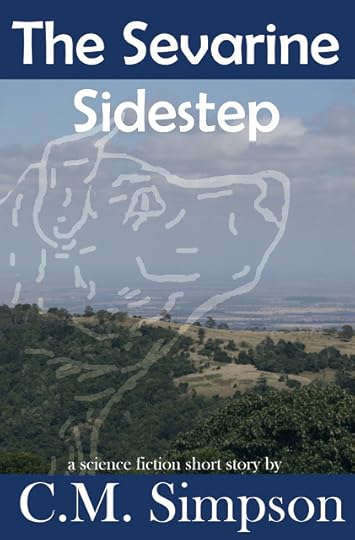
What do you do when your brother betrays you, and you end up on another world, in the employ of a company whose recruiting methods leave a lot to be desired? Well, I guess you keep your head down, while you try to figure out a way to get back home.
And I sure miss home, right now.

What do you do when your brother betrays you, and you end up on another world, in the employ of a company whose recruiting methods leave a lot to be desired? Well, I guess you keep your head down, while you try to figure out a way to get back home.
And I sure miss home, right now.
Published on December 04, 2016 23:17
December 3, 2016
Progress Report: Week Ending December 3, 2016
This week, I tried to increase my fitness routine—and, even though it is summer, I tried to incorporate my walking into my drop-off routine, aiming for a regular two-hour walk straight after school drop off. I lasted three days, before I started to get sick.
It might have been okay if the temperatures hadn’t reached over twenty-nine degrees Celsius, before I was done, on each of those days, but it did, and the rest of the week was warmer. On th fourth day, I had mild flu-like symptoms, so I rested for most of the day, but did some vacuuming and gardening in the evening, instead. On the fifth day, I was short of breath, and realised I was reacting to something local, but couldn’t pin-point what. As far as I was aware, I’m not asthmatic, although I may have become hay-feverish since coming to Canberra. Again, I rested, inside, away from the pollen, during the day, but gardened in the evening cool. I was still not a hundred percent on the seventh day, but took a short walk, nonetheless.During this time, not a lot of writing was done, and I found myself struggling with the last two chapters of Shades of Memory. I was aiming at finishing it by the end of November, but the words were being uncooperative. My word-rate dropped from an average of 1,200 words per hour to 350. When that happens, it’s time to take a break, recharge, refresh… and do some of the chores that need to be done, go for a walk, and so forth. And that was pretty much this week.This coming week, it’s time to follow the dated task list for the publishing side of this business – which is part of the reason why you see the increase in blogging words, this week, also. Time I got serious, right?
Overview
New words produced: 8,013Old words revised: 0Outlines and Notes: 0Works completed: 0Works revised: 0Covers created: 0Works published: 0Works submitted: 0Competitions Entered: 0Bloggery: 0University Prep and Assignments: 0
Stepping Up Challenge Update
Languages: Trying to get back into the swing of things with languages - having difficulty with the increased preparation for next year's publication schedule.Non-Fiction Reading: Nil
Ingress UpdatesAs you’ve probably guessed from the writing numbers, I had an easy writing week, and tried to increase my walking – well the hot weather has put an end to that, until I change my routine. However, this is what I achieved this week.
On Monday, I redid 5 missions – and I'll blog about why later this month:
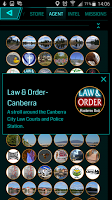
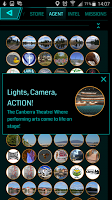
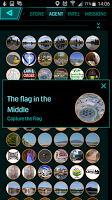
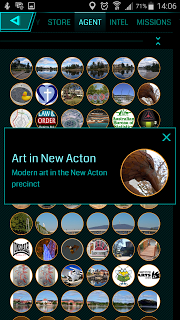
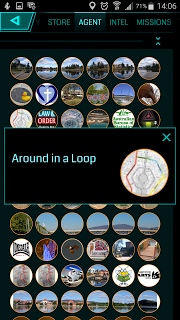
I then did 11 new missions – four on Tuesday, and seven on Wednesday, in two two-hour sessions:
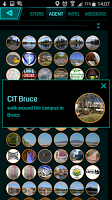
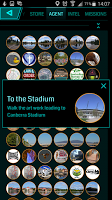
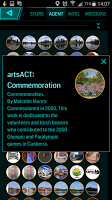
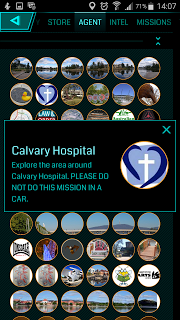
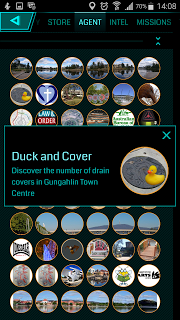
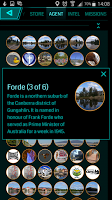
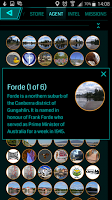
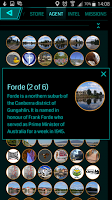
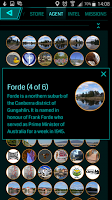
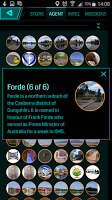
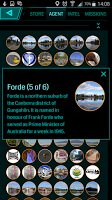
On Tuesday, I got sunburned – Canberra summer is a time for long sleeves, not t-shirts!
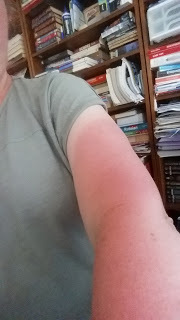
The end of Wednesday's walk resulted in a pretty picture, see - check out the top row.
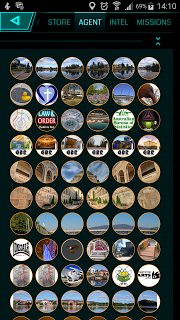
I also levelled, somewhere along the way:
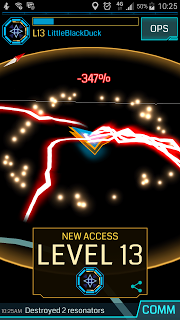
No... Honest, guv. That, wot you see there, is not actually incoming fire from portals. No, guv, I would never attack some poor portal cos it was the wrong colour - never...
So, yeah, all joking aside, I might have been in the middle of turning some green portals blue when that happened, and they were shooting back. You don't usually get lightning when you level. It looks kinda cool, though, right?
PokemonGo Updates
Somehow, in between the ingressing, I managed to do some Pokegoing as well.
Starting the week with a level up was pretty cool:
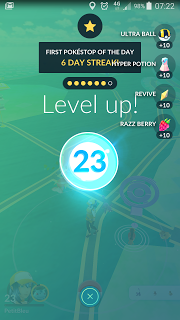
And then I surprised myself by finding a ditto, when I had given up all hope. It was disguised as a pidgey, and I had one ball in the rucksack, so I was pretty chuffed with the catch:


And I earned a badge for catching fairy-type pokemon:
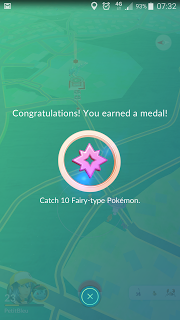
So, not a bad week for PokeGo, and not a bad week for walking.
Publishing Tasks
Created 14 blog posts for this blog;
New Arrivals
Nil
Published on December 03, 2016 11:26
December 2, 2016
Progress Report: Week Ending November 26, 2016
Last week’s progress report. Late again, as usually happens when I try to increase one or another part of my routine. I focussed on completing the NaNoWriMo quota this week, after a fairly rough and inconsistent start. Finally, seemed to put it together this week, so it was done.
Anyway, that happened, and I got some gardening done.
 Overview
OverviewNew words produced: 24,863Old words revised: 0Outlines and Notes: 912Works completed: 0Works revised: 1Covers created: 1Works published: 0Works submitted: 0Competitions Entered: 0Bloggery: 1,164University Prep and Assignments: 0
Stepping Up Challenge UpdateLanguages: Nil progressNon-Fiction Reading: NilIngress UpdatesNo new challenges for me.PokemonGo UpdatesNothing new to reportPublishing TasksCreated 4 blog posts for this blog;Updated royalty records;Created the cover for The Sevarine Sidestep
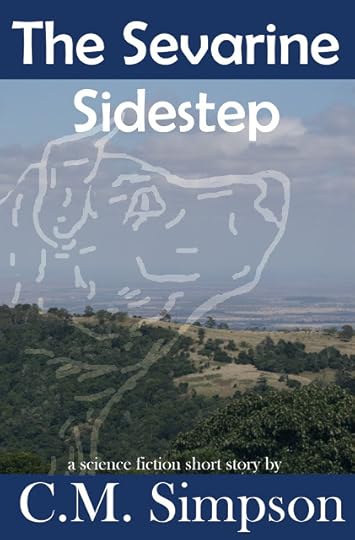 New Arrivals
New ArrivalsThe following pieces arrived last week and are awaiting completion:
Horror2— Horror Story Untitled 21/11/2016 : about vampires and other stuff;UF4B—Tamerlain’s Werewolf: an urban fantasy novel in the Aggie and Tams urban fantasy series in which there are werewolvesYANovel30—Home Run: about a mother and daughter starting anew.
The following older pieces of writing were rediscovered and assigned a project code:
UF4A—Shades of Memory: an urban fantasy novel in the Aggie and Tams urban fantasy series, in which the two meet, and explore rumours of a secret Australian research centre on aliens, while Aggie finalises her art commission for the Australian War Memorial. UF3A—Appleby’s Tale: an urban fantasy story set in the pixie dust setting from the flash fiction and poems.
Published on December 02, 2016 22:42



